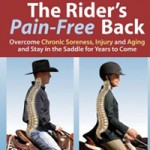Training with Treats: Horses and the rewards of bonding
On one extreme there is the macho cowboy who believes that treats are bad, and obedience comes from the avoidance of pain. On the other, there is a image of the doting, probably non-riding lady who gives so many treats to her horse that the horse bullies her to get more. The lady is not using treats well, as reinforcement for deeds well done and good behavior. The cowboy-well let’s face it. A cowboy is someone you pay to out-think cattle. Try this for a change:
Starting with the first time a foal nurses at the mare’s udder, it’s both physical nourishment and emotional bonding. Food becomes a vehicle for love. Bonding has taken place. The food reinforces bonding each time it’s given. This process is reinforced chemically by the secretion of endorphins, the body’s natural morphine-like chemicals. People who use treats to train animals, whether small dogs or massive elephants, will certainly agree that treats in small amounts reinforce desired behavior, and make the animal want to repeat the behavior. Furthermore, bonding with the treat giver is equally critical, as any lion tamer would probably note. Their survival requires the lion to recognize them as the giver of rewards, rather than be a reward. The lion tolerates their presence once it realizes that desired behavior equals the desired treat. The trainer ceases to become a potential menu item and is associated with a rewardable and pleasurable activity.
How do we get from foal-mare to foal-owner bonding? It’s called transference. The animal will bond to any source of food rewards. This is called the recall phenomenon, and transference allows the transfer of bonding emotions that are recalled pleasurably. This is why brutal training only produces acquiescence at best. Better and quicker learning through pleasure is the key. Even the gentle stroke on the trail raises the possibility that a reward will come at the end of the ride. This is enough to stimulate endorphin production, to enhance the experience chemically.
Returning to the doting owner who spoils her horse, that horse may become overbearing and demanding of unearned treats. If the owner gives in, she’s reinforcing that behavior. The answer is to make every experience around your horse a training one. As an example, let’s use my personal method of getting my horses up out of a pasture. I keep a number of treats in my right front pocket. The horses know that’s where they are. If they see me put my hand in the right front pocket, they come up to me and are rewarded for this. The reward makes this a positive encounter, and there’s no grief in slipping the halter on and going to work. After watching cowboys spend hours chasing horses to catch them, I vowed to use this basic circus training technique to save countless hours and frustration. If you use this technique, keep everything else in the other pockets. No sense in developing a Pavlov dog expectation of a treat each time the cell phone rings.
Used responsibly, treats are psychologically valuable in developing a working relationship with your horse. No need to lavish great quantities, as the same amount of endorphin, is produced whether the treat is large or small. Treats reward both emotionally and physically, so they are good for developing and maintaining bonds with your horses. Treat makers rejoice, your future is scientifically assured.
Keep Riding – JSW and don’t forget to treat your horse to a ThinLine, It helps to create the bond as well.
 Blog Post by Dr. Jim Warson, author of The Rider’s Pain Free Back
Blog Post by Dr. Jim Warson, author of The Rider’s Pain Free Back
Dr. Jim Warson, endorses ThinLine in his book the Rider’s Pain Free Back.


